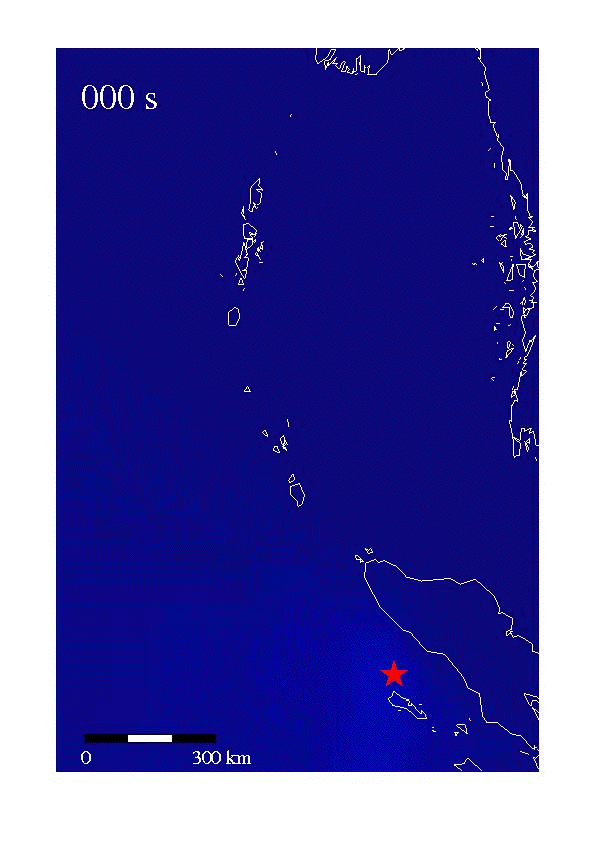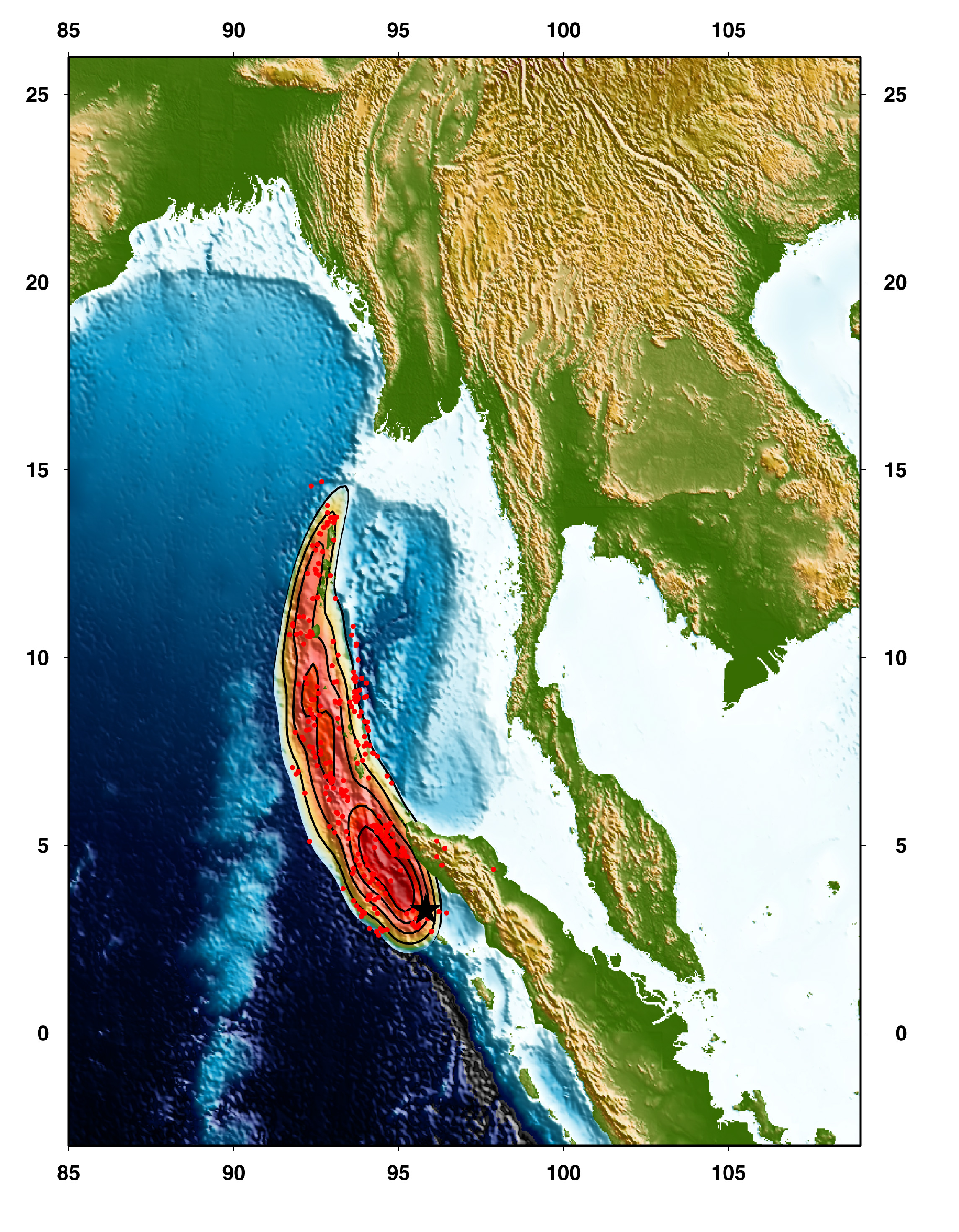Rupture Modelling of the December 26, 2004 Sumatra-Andaman Earthquake using the Hi-Net Array
Point of contact: Miaki Ishii
The December 26, 2004 Sumatra-Andaman earthquake and its ensuing tsunami caused unprecedented and unanticipated destruction across Asia, but the character of the rupture has proven difficult to unravel. We introduce and apply a simple back-projection technique to one of the finest seismic networks in the world: the Hi-Net array in Japan. Our results show that the Sumatran event swept across about 1300 km from northern Sumatra to the Andaman Islands with nearly constant rupture speed of ~2.8 km/s, and lasted for about 8 minutes, making it one of the largest earthquakes of the last century. Based upon the estimate of the rupture area and an empirical relationship between the slip area and the moment magnitude, this event is estimated to have been magnitude 9.3. This rupture imaging method can be applied in the future as a real-time monitoring tool and for studies of earthquake rupture dynamics.
Rupture PropagationPropagation of rupture front as imaged by the Hi-Net array. The plotted quantity is the squared amplitude of the back-projected stacks, i.e., proportional to released energy at high frequencies.
 |
 |
 |
Rupture Length = ~1300 km |
Numerical table of total (time integrated) high-frequency energy release as a function of position
Reference
Ishii, M., Shearer, P.M., Houston, H., & Vidale, J.E., 2007.
Teleseismic P wave imaging of the 26 December 2004 Sumatra-Andaman and 28 March 2005 Sumatra earthquake ruptures using the Hi-net array.
J. Geophys. Res. 112, B11307, doi:10.1029/2006JB004700.
Ishii, M., Shearer, P.M., Houston, H., & Vidale, J.E., 2005.
Rupture extent, duration, and speed of the 2004 Sumatra-Andaman earthquake
imaged by the Hi-Net array.
Nature 435 , 933-936.
Acknowledgment
The Hi-Net array data used in the analysis were generously made available on the internet by the National Research Institute for Earth Science and Disaster Prevention